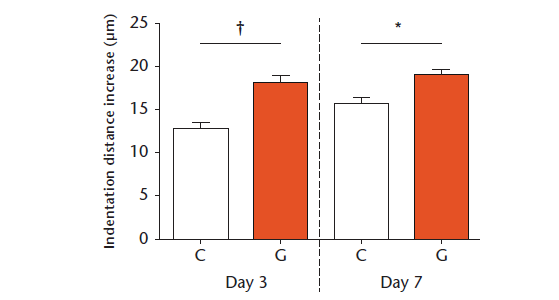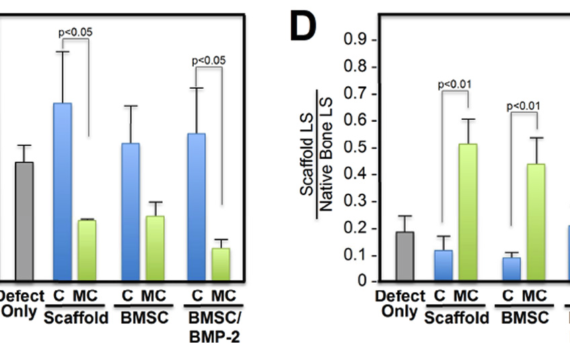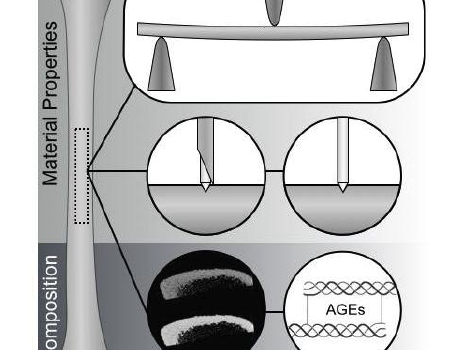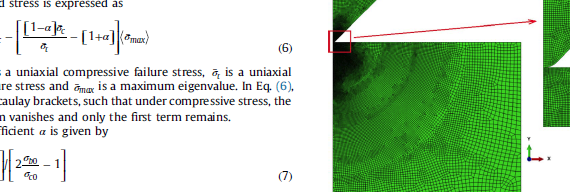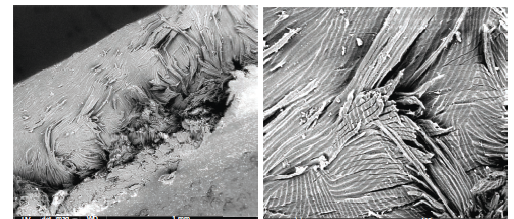Abstract BACKGROUND: Successful fracture fixation depends critically on the stability of the screw-bone interface. Maximum achievable screw torque reflects the competence of this interface, but it cannot be quantified prior to screw stripping. Typically, the surgeon relies on the patients’ bone mineral density and radiographs, along with experience and tactile […]
Yearly Archives: 2018
Abstract OBJECTIVES: Advanced glycation end-products (AGEs) are a post-translational modification of collagen that form spontaneously in the skeletal matrix due to the presence of reducing sugars, such as glucose. The accumulation of AGEs leads to collagen cross-linking, which adversely affects bone quality and has been shown to play a major […]
Abstract Fracture non-unions and bone re-fracture are common challenges for post-fracture management. To achieve better prognosis and treatment evaluation, it is important to be able to assess the quality of callus over the time course of healing. This study evaluated the potential of spatially offset Raman spectroscopy for assessing the […]
Abstract Gap junctions are formed from ubiquitously expressed proteins called connexins that allow the transfer of small signaling molecules between adjacent cells. Gap junctions are especially important for signaling between osteocytes and other bone cell types. The most abundant type of connexin in bone is connexin 43 (Cx43). The C-terminal […]
Abstract Current strategies for skeletal regeneration often require co-delivery of scaffold technologies, growth factors, and cellular material. However, isolation and expansion of stem cells can be time consuming, costly, and requires an additional procedure for harvest. Further, the introduction of supraphysiologic doses of growth factors may result in untoward clinical […]
Abstract The assessment of fracture risk often relies primarily on measuring bone mineral density, thereby accounting for only a single pathology: the loss of bone mass. However, bone’s ability to resist fracture is a result of its biphasic composition and hierarchical structure that imbue it with high strength and toughness. […]
Abstract Methionine restriction (MR) extends the lifespan of a wide variety of species, including rodents, drosophila, nematodes, and yeasts. MR has also been demonstrated to affect the overall growth of mice and rats. The objective of this study was to evaluate the effect of MR on bone structure in young […]
Abstract Reference Point Indentation (RPI) is a novel technique aimed to assess bone quality. Measurements are recorded by the BioDent instrument that applies multiple indents to the same location of cortical bone. Ten RPI parameters are obtained from the resulting force–displacement curves. Using the commercial finite element analysis software Abaqus, […]
Abstract Two hard botanical structures have been characterised in terms of mechanics and structure: the pseudofruit of Coix lacryma-jobi, a native plant of Southeast Asia, and the kernel of the drupe fruit of Thevetia peruviana, a native plant of tropical America. Two indentation techniques at different scales (micro and nano) were employed. […]
Abstract Caloric restriction (CR), protein restriction (PR), and specific amino acid restriction (e.g., methionine restriction (MR)) are different dietary interventions that have been confirmed with regard to their comprehensive benefits to metabolism and health. Based on bone densitometric measurements, weight loss induced by dietary restriction is known to be accompanied […]


